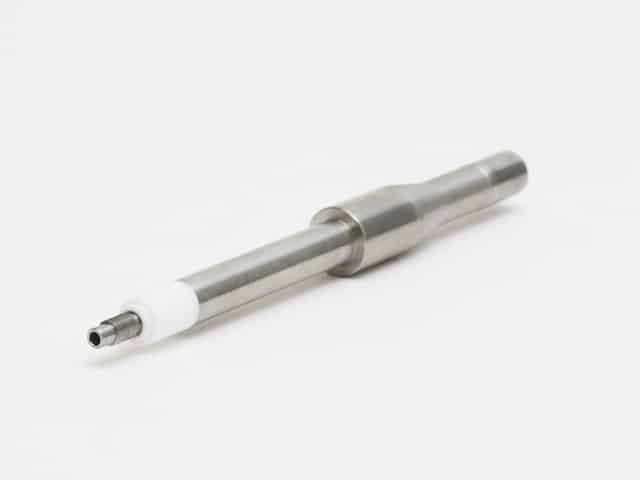RDE/RCE 12 mm Shaft for ASR Rotator
This product has been discontinued and can no longer be purchased. The product remains on our website for reference and a listing of its specifications. There is no direct product replacement to offer.
This 12.0 mm OD PTFE shrouded shaft is compatible with the long discontinued ASR Rotator, and accepts E3 and E4 Series rotating disk electrode (RDE) and 12.0 mm OD rotating cylinder electrode (RCE) tips. The end of the shaft has an internal taper and 1/4-28 thread configuration which mates with the RDE or RCE tip.
Customers must be logged into their account to view prices. Not all regions provide pricing online. If you do not see prices, you can obtain them from the designated sales channel in your region.
This 12.0 mm OD PTFE shrouded shaft is compatible with the long discontinued ASR Rotator, and accepts E3 and E4 Series rotating disk electrode (RDE) and 12.0 mm OD rotating cylinder electrode (RCE) tips. The end of the shaft has an internal taper and 1/4-28 thread configuration which mates with the RDE or RCE tip.




